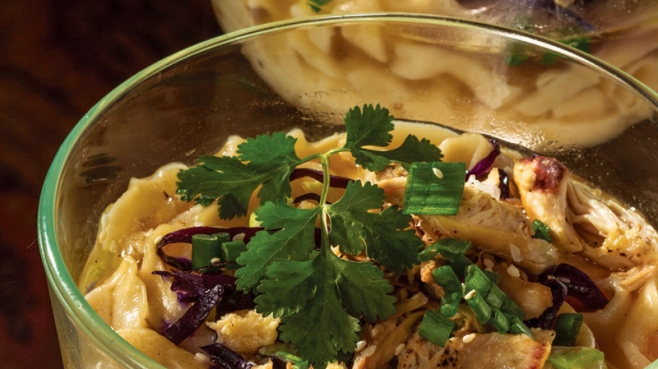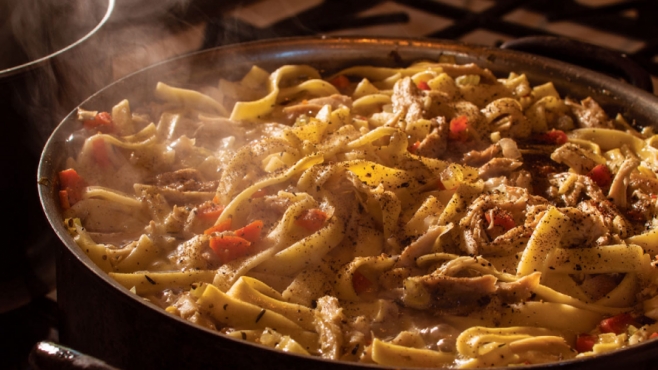Liquid Broth: Well-Made Broth
Well-made broth makes many dishes tastier and healthier
Well-made broth makes many dishes tastier and healthier
The beauty of a good broth remains with us, even though the month of the cleansing broth diet has passed, even if you’ve never educated yourself on the Paleo diet and you think your gut lining is fine, thank you very much. Or if you believe that gelatin protein is fine, but so are other proteins, like eggs and peanut butter, broth still has many virtues.
For the cook, it’s all about flavor. For the parsimonious, it’s about getting a lot from little. For the frugal and ethical cook it means using every bit of an animal and getting the most out of what you’ve purchased with a hard-earned dollar.
While many health-related broth enthusiasts extol the virtues of beef bones, it is chicken bones give us the type O broth, the universal donor to every dish whether based on vegetables, beans, beef or lamb. Chicken broth may be used in the sauce, gravy or simmering liquid for all. Pound for pound, chicken bones have more flavor and often more gelatin-giving collagen than beef.
I’m so enthusiastic about chicken broth that I buy bones — backs and necks — in addition to whole chickens. To use a whole chicken, I cut off leg quarters, breast and wings, then put the back, neck and wing tip (the skinny third joint) into a toaster oven to brown, then simmer those pieces for broth. If I have extra backs and wings (hearts and gizzards may be used too, but not livers), I brown those also (in a bigger oven) and make a bigger batch of broth.
There are many theories and expressions of chicken broth. Some recipes instruct us to combine chicken pieces with carrots and onion and celery and maybe herbs. Others insist that the broth be perfectly clear. Some boil broth rapidly to emulsify the fat into the liquid. But the simplest approach: Just simmer chicken (or chicken bones) with water.
Protein-containing juices, including blood, will coagulate while the water simmers and rise to the top of the pan. Many recipes suggest you skim and discard this foam. If the chicken is fatty — not usually an issue with the pasture-raised birds you’ll buy at a farmers’ market — you may prefer to chill the broth before using so that hardened fat may be lifted off and discarded. I use that chicken fat for cooking other things: sauteing vegetables for soup, starting risotto, cooking onions and garlic for a stew or chili — anyplace that regular cooking oil might be called for.
Boneless skinless chicken breast will not yield the flavor that bone-in chicken (and dark meat) add to broth, but if you are making soup, you can cook the boneless chicken in broth you’ve already made. It will add a little flavor and you won’t have to fool with bones and skin.
The broth recipe below calls for roasting the chicken pieces for a long time so they brown well and make a broth with lots of flavor. But many cultures have built strong culinary traditions on making broth from uncooked chicken, so if it seems too time consuming, simply mix the raw chicken with the water.







